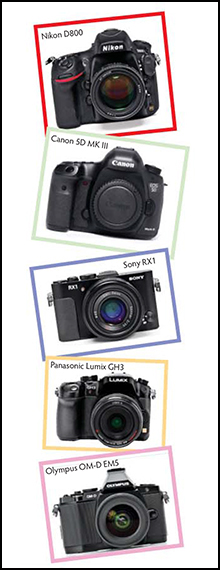
Readers of SP will be well aware that in all our camera reviews, we talk about build quality as one of the important features that to make an overall good product. But what exactly is build quality?
A number of factors are to be considered before concluding that a camera has got good build quality. These factors are detailed below:
The first factor which determines build quality is obviously the design. Most D-SLRs, and a number of compact cameras, are in fact designed by specialist design houses for the camera manufacturers. Some Nikon D-SLRs, for instance, are designed by the Italian firm GUIGIARO. A good design makes a lot of difference to the ultimate product. It also plays a huge role in determining the ultimate fit and finish of the end product. A bad design may result in several sharp edges or inconveniently located dials and buttons, thus creating frustration for the end-user, and impairing actual performance.
 Today’s design shops use computer aided design in order to ensure precision molding and casting and therefore cameras produced these days are generally better finished than ever before. Examples of good design would be cameras like Nikon’s D800 and D600, Canon’s 5D Mark III and 6D, Sony’s RX1, RX100 and RX50, and Panasonic’s GH3 and GX1, and Olympus’ OMD.
Today’s design shops use computer aided design in order to ensure precision molding and casting and therefore cameras produced these days are generally better finished than ever before. Examples of good design would be cameras like Nikon’s D800 and D600, Canon’s 5D Mark III and 6D, Sony’s RX1, RX100 and RX50, and Panasonic’s GH3 and GX1, and Olympus’ OMD.
The choice of material can be a major factor in determining the build quality. Camera bodies can be made either from plastic, plastic composites or metals like magnesium alloy. Higher end cameras generally use metal alloys in their construction. This necessarily increases the weight of the camera. Low-end cameras tend to use more of polycarbonate. Top engineers opine that with today’s technology, higher precision is possible with plastic and plastic composites. Metal, on the other hand, requires greater care in final finishing.
Are cameras made from metal and alloys always superior to the plastic ones? The answer is “not necessarily”. In both cases, if we drop the camera, the damage is likely to be significant. The only difference is that whilst the metal camera may be dented, the plastic camera may break.
Top camera manufacturers also give their cameras environmental sealing. This means protection against both dust and liquids. Some Tough-cameras are water-tight up to 12 meters and can therefore withstand high water pressure. Camera manufacturers use high quality seals in order to make various joints of the camera environment proof. Environmental sealing is very useful especially in humid countries like India where both camera bodies and lenses tend to develop fungus very easily.
Finally, build quality does not necessarily mean reliability. Just like cars, a camera may be very well built, but be not so reliable. A good example in the 70’s and 80’s were the Zenith cameras produced in the Soviet Union. Whilst the cameras themselves were heavy and rock solid, the reliability record of Zenith cameras was very indifferent. This was also true, although to a lesser extent, for cameras like PRAKTIKA, produced in erstwhile East Germany.
H. S. Billimoria

